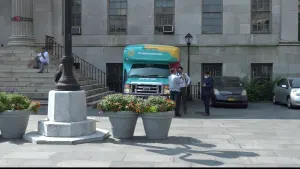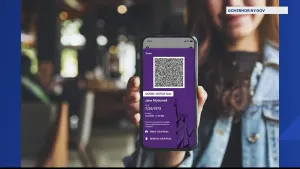More Stories
The Centers for Disease Control and Prevention says that because travel can increase your chances of getting infected and spreading COVID-19, staying home is the best way to protect yourself and others from getting sick.
If you are thinking about traveling away from your local community, ask yourself these seven questions:
1. Is COVID-19 spreading where you’re going?
You can get infected while traveling.
You can get infected while traveling.
2. Is COVID-19 spreading in your community?
Even if you don’t have symptoms, you can spread COVID-19 to others while traveling. The European Union, for example, reopened its borders to 15 nations, but not to U.S. tourists.
Even if you don’t have symptoms, you can spread COVID-19 to others while traveling. The European Union, for example, reopened its borders to 15 nations, but not to U.S. tourists.
3. Will you or those you are traveling with be within 6 feet of others during or after your trip?
Being within 6 feet of others increases your chances of getting infected and infecting others.
Being within 6 feet of others increases your chances of getting infected and infecting others.
4. Are you or those you are traveling with more likely to get very ill from COVID-19?
Individuals who have an increased risk of severe illness from COVID-19 should limit their travel.
Individuals who have an increased risk of severe illness from COVID-19 should limit their travel.
5. Do you live with someone who is more likely to get very ill from COVID-19?
If you get infected while traveling you can spread COVID-19 to loved ones when you return, even if you don’t have symptoms.
If you get infected while traveling you can spread COVID-19 to loved ones when you return, even if you don’t have symptoms.
6. Does the state or local government where you live or at your destination require you to stay home for 14 days after traveling?
Some state and local governments, including Connecticut, New Jersey and New York, may require people who have recently traveled to stay home for 14 days.
Some state and local governments, including Connecticut, New Jersey and New York, may require people who have recently traveled to stay home for 14 days.
7. If you get sick with COVID-19, will you have to miss work or school?
People with COVID-19 disease need to stay home until they are no longer considered infectious.
People with COVID-19 disease need to stay home until they are no longer considered infectious.
If you do travel, the CDC says that to protect yourself and others during your trip you should clean your hands often, avoid touching your eyes, nose, or mouth, avoid close contact with others, keep 6 feet of physical distance from others, wear a cloth face covering in public, cover coughs and sneezes, and pick up food at drive-throughs, curbside restaurant service, or stores.
You should also consider what types of travel you will be making. While the CDC says that it is not known if one type of travel is safer than others, airports, bus stations, train stations, and rest stops are all places travelers can be exposed to the virus in the air and on surfaces. These are also places where it can be hard to social distance:
Consider the following risks for getting or spreading COVID-19, depending on how you travel:
Air travel
Air travel requires spending time in security lines and airport terminals, which can bring you in close contact with other people and frequently touched surfaces. Most viruses and other germs do not spread easily on flights because of how air circulates and is filtered on airplanes. However, social distancing is difficult on crowded flights, and you may have to sit near others (within 6 feet), sometimes for hours. This may increase your risk for exposure to the virus that causes COVID-19.
Air travel requires spending time in security lines and airport terminals, which can bring you in close contact with other people and frequently touched surfaces. Most viruses and other germs do not spread easily on flights because of how air circulates and is filtered on airplanes. However, social distancing is difficult on crowded flights, and you may have to sit near others (within 6 feet), sometimes for hours. This may increase your risk for exposure to the virus that causes COVID-19.
Bus or train travel
Traveling on buses and trains for any length of time can involve sitting or standing within 6 feet of others.
Traveling on buses and trains for any length of time can involve sitting or standing within 6 feet of others.
Car travel
Making stops along the way for gas, food, or bathroom breaks can put you and your traveling companions in close contact with other people and surfaces.
Making stops along the way for gas, food, or bathroom breaks can put you and your traveling companions in close contact with other people and surfaces.
RV travel
You may have to stop less often for food or bathroom breaks, but RV travel typically means staying at RV parks overnight and getting gas and supplies at other public places. These stops may put you and those with you in the RV in close contact with others.
You may have to stop less often for food or bathroom breaks, but RV travel typically means staying at RV parks overnight and getting gas and supplies at other public places. These stops may put you and those with you in the RV in close contact with others.
More from News 12
1:48

Mobile vaccine van parks at Brooklyn Borough Hall
0:23

New Excelsior Pass Plus app extends beyond New York jurisdiction

Your Coronavirus 2020 Photos

10 online learning tools for students to use at home
11:21:40

6 tips for home schooling children and remote learning
